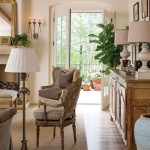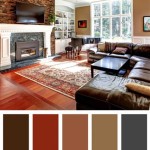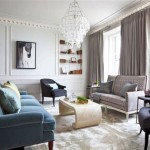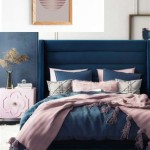```html
Lounge Room Decor Ideas: Creating a Stylish and Comfortable Space
The lounge room, often called the living room, is the heart of the home. It is a space for relaxation, entertainment, and socializing. Therefore, its decor should reflect personal style while prioritizing comfort and functionality. A well-decorated lounge room can enhance the overall ambiance of a home and create a welcoming environment for residents and guests alike. This article explores various decor ideas for creating a stylish and comfortable lounge room.
Understanding the Room's Potential
Before embarking on any decor project, it is crucial to assess the lounge room's existing features and potential. This includes considering factors such as room size, natural light, architectural details, and existing furniture. A small room might benefit from minimalist decor and light colors to create an illusion of spaciousness, while a larger room can accommodate bolder design choices and more substantial furniture pieces. The amount of natural light the room receives will influence the color palette selection and the placement of furniture to maximize brightness and minimize glare.
Architectural details like fireplaces, bay windows, and built-in shelving units can serve as focal points and anchors for the overall design scheme. Accentuation of these features with appropriate lighting and decor elements can elevate the room's aesthetic appeal. Consider the existing furniture to determine which pieces can be integrated into the new design and which need to be replaced or reupholstered. This initial assessment will lay the foundation for a cohesive and well-planned decor project.
Furthermore, it's wise to consider the room's primary function. Is it mainly used for watching television, reading, entertaining guests, or a combination of these activities? The answer will significantly influence furniture selection, layout, and the type of accessories chosen. A room primarily for entertainment will require comfortable seating arrangements and a well-placed television, while a reading room might prioritize comfortable chairs, adequate lighting, and bookshelves.
Color Palette and Texture
The color palette is a fundamental element of lounge room decor that significantly impacts the overall mood and atmosphere. Colors can evoke different emotions and perceptions, so the choice should be carefully considered. Neutral colors such as white, gray, beige, and cream provide a versatile backdrop that can be easily complemented with pops of color through accessories, artwork, and textiles. These neutral shades also create a sense of spaciousness and airiness, making them ideal for smaller lounge rooms.
For those seeking a bolder look, deeper and more saturated colors like navy blue, emerald green, or burgundy can create a sophisticated and dramatic effect. However, it's important to use these colors judiciously to avoid overwhelming the space. Accent walls, statement furniture pieces, or decorative accessories are effective ways to incorporate bolder colors without sacrificing the overall balance of the room. Consider the existing lighting conditions when selecting colors, as colors can appear different under different lighting conditions.
Texture is another essential element that adds depth and visual interest to the lounge room. Incorporating a variety of textures through furniture, textiles, and accessories can create a more inviting and tactile environment. For example, a plush velvet sofa can be paired with a woven rug, linen curtains, and knitted throw pillows to create a layered and luxurious feel. Natural materials like wood, stone, and leather can also add warmth and texture to the room. Contrasting textures – such as pairing smooth surfaces with rough ones – can create visual intrigue and prevent the room from feeling flat or monotonous.
Furniture Arrangement and Layout
The furniture arrangement is a crucial aspect of lounge room decor as it directly impacts the functionality and flow of the space. The layout should facilitate conversation, movement, and access to different areas of the room. When arranging furniture, consider the focal point of the room, which could be a fireplace, a television, or a large window. Furniture should be positioned to maximize the view of the focal point while also promoting interaction among occupants.
In general, creating a conversational grouping with sofas and chairs facing each other encourages social interaction. A coffee table placed in the center of the seating area provides a convenient surface for drinks, snacks, and decorative objects. Avoid placing furniture directly against the walls, as this can make the room feel smaller and less inviting. Instead, leave some space behind furniture to create a sense of depth and airiness. The use of area rugs can define different zones within the lounge room, such as the seating area, the reading nook, or the play area.
Scale is an important consideration when selecting furniture. Oversized furniture can overwhelm a small room, while undersized furniture can get lost in a large room. Choose furniture that is proportionate to the size of the room and the other elements within it. Also, consider the traffic flow through the room. Ensure that there are clear pathways between furniture pieces to allow for easy movement. Avoid creating obstacles or bottlenecks that can disrupt the flow of the space.
Lighting: Ambiance and Functionality
Lighting plays a pivotal role in setting the ambiance and functionality of the lounge room. A well-lit room feels more inviting and comfortable, while inadequate lighting can make the space feel dark and gloomy. A layered lighting approach is ideal, incorporating a combination of ambient, task, and accent lighting to create a versatile and well-illuminated space. Ambient lighting provides overall illumination, while task lighting provides focused light for specific activities like reading or working. Accent lighting highlights architectural features, artwork, or decorative objects.
Ambient lighting can be achieved through ceiling fixtures like chandeliers, pendant lights, or recessed lighting. Dimmer switches are a valuable addition to ambient lighting, allowing for adjustable brightness levels to suit different moods and activities. Task lighting can be provided by floor lamps, table lamps, or adjustable reading lights. These fixtures should be positioned strategically to provide adequate light for reading, writing, or other tasks. Accent lighting can be achieved through spotlights, picture lights, or wall sconces. These fixtures can be used to highlight artwork, architectural details, or other decorative elements.
Consider the color temperature of the light bulbs when selecting lighting fixtures. Warm white light (2700-3000K) creates a cozy and inviting atmosphere, while cool white light (3500-4100K) provides a brighter and more energizing feel. Natural light is also an important consideration. Maximize the amount of natural light entering the room by keeping windows clean and uncluttered. Use sheer curtains or blinds to filter harsh sunlight and create a softer, more diffused light.
Accessories and Personal Touches
Accessories and personal touches are what truly transform a lounge room into a reflection of individual style and personality. These elements add character, warmth, and visual interest to the space. Accessories can include artwork, photographs, decorative pillows, throws, rugs, plants, and collectibles. The key is to curate a collection of items that are meaningful and visually appealing, rather than cluttering the space with unnecessary objects.
Artwork can be a powerful way to express personal taste and add visual interest to the lounge room. Choose artwork that complements the color palette and overall style of the room. Photographs can add a personal touch to the space, showcasing cherished memories and experiences. Decorative pillows and throws can add comfort and texture to the seating area. Choose pillows and throws in a variety of colors, patterns, and textures to create a layered and inviting look.
Rugs can define different zones within the lounge room and add warmth and texture to the floor. Choose a rug that is appropriately sized for the space and complements the furniture arrangement. Plants can bring life and freshness to the lounge room, adding a touch of nature and purifying the air. Choose plants that are well-suited to the lighting conditions and require minimal maintenance. Personal collectibles and souvenirs can add a unique and personal touch to the space, showcasing individual interests and travels. Display these items in a thoughtful and organized manner to avoid creating clutter.
```
50 Inspirational Living Room Ideas Design

Living Room Decor Ideas For Your Home Design Cafe
:strip_icc()/cdn.cliqueinc.com__cache__posts__212361__-2030968-1483470364.700x0c-8571e60cad7b42a981ab29ae10b5c153-497b002f87af4747b2ab38b560e7c0fd.jpg?strip=all)
How To Decorate A Living Room 20 Ideas And Common Mistakes

Looking For Ideas To Decorate Your Living Room Designcafe

28 Cozy Living Room Decor Ideas To Copy Society19 Gray Apartment

Living Room Ideas

Living Room Decorating Tips Ideas And Essentials Spaces

50 Inspirational Living Room Ideas Design
:max_bytes(150000):strip_icc()/241791572_212003384294928_1925123565378044744_n-3dceead11099472ca283f51eea10a0f3.jpg?strip=all)
52 Small Living Room Ideas To Maximize Space And Style

Star Furniture







